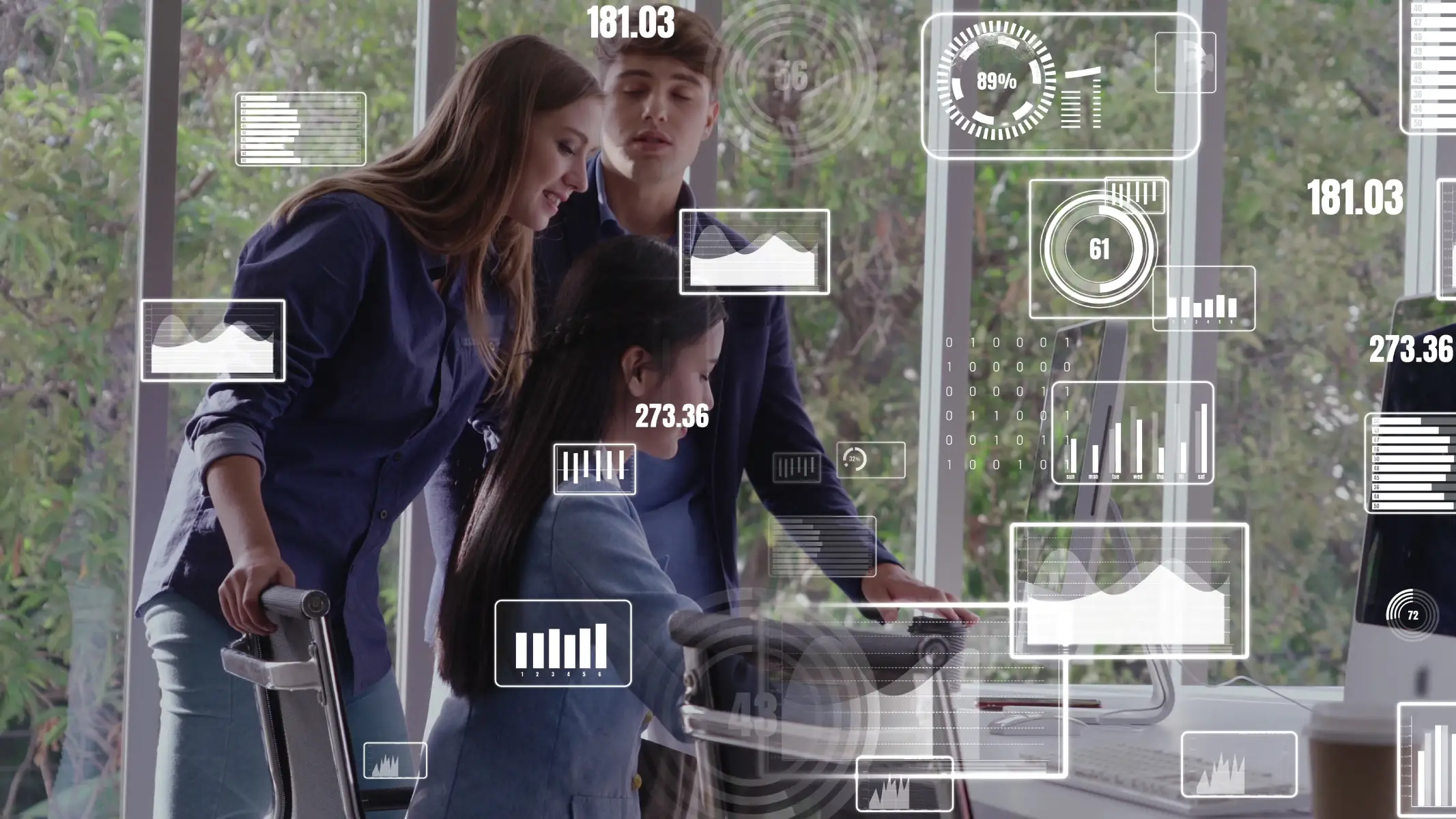Introduction
As organizations compete on a global stage, talent has become a key differentiator for success. However, the methods of attracting, managing, and retaining talent are changing as rapidly as the world of work itself. Digital transformation, economic volatility, remote working, and evolving employee expectations have collectively forced businesses to adopt new practices to remain agile and competitive. Among these developments, the use of data and analytics in talent management has emerged as one of the most consequential enablers of organizational success.
HR analytics—or people analytics—bridges the gap between raw workforce data and strategic decision-making. By leveraging advanced tools and methodologies, HR professionals can predict talent trends, diagnose workforce gaps, and optimize team performance. The transformation from traditional HR functions to data-driven decision-making allows organizations to cultivate high-performing teams aligned with business objectives, meeting the demands of an ever-changing landscape.
This whitepaper explores the growing role of people analytics in HR, highlights key tools and methodologies that organizations can utilize, and analyzes the future of talent management and workforce planning. By transforming people-related data into actionable insights, organizations have a powerful opportunity to unlock the full potential of their workforce.
The Growing Role of People Analytics in HR
The workplace is no longer just a transactional environment but an ecosystem that thrives on its people: their skills, contributions, engagement, and ability to collaborate effectively. In this context, HR analytics has become indispensable.
1. From Reactive to Proactive HR Practices
Traditionally, HR managers primarily used data for operational purposes, such as tracking attendance or processing payroll. While functional, these methods offered little actionable insight into employee behavior or organizational performance. Today, people analytics enables HR to move from a reactive approach—responding to issues as they arise—to a predictive one, where potential problems are forecast and addressed before they escalate.
For example:
- Predictive analytics can assess employee turnover risks, enabling targeted retention strategies to be implemented before key talent departs.
- Attrition trends gleaned from analytics may point to dissatisfaction in specific departments or competitive gaps in compensation structures.
2. Unlocking Strategic Workforce Insights
People analytics supports the creation of strategic workforce plans that align talent management initiatives with organizational goals. Organizations can answer critical questions such as:
- “What skills will our workforce need in five years to remain competitive?”
- “How do we retain and develop top talent?”
- “What is the most cost-effective way to reskill employees for emerging job functions?”
By moving beyond intuition, data provides HR professionals and leaders with evidence-based insights that reduce bias, refine decision-making, and align talent strategies with long-term corporate objectives.
3. Driving Inclusion and Diversity
Diversity, equity, and inclusion (DE&I) have become non-negotiable goals for businesses. Effective analytics enables organizations to measure progress in these areas, uncover disparities, and drive accountability. For instance, analytics can reveal patterns of inequality in hiring, promotions, or resources, providing a data-driven foundation for corrective action.
4. Enhancing Employee Experience
Modern HR analytics encompasses employee surveys, engagement scores, and feedback mechanisms, enabling organizations to proactively address challenges related to employee satisfaction, mental health, and workplace engagement. Enhanced employee experiences create a virtuous cycle of higher productivity, lower turnover, and a stronger employer brand.
Tools and Methodologies for Talent Insights
Achieving impactful results from HR analytics requires the use of specialized tools and structured methodologies. Below, we examine the key technologies and approaches currently shaping the talent analytics landscape.
1. Core HR Analytics Tools
Several advanced tools are available to help organizations gather, analyze, and interpret workforce data. Leading solutions include:
- HRIS (Human Resource Information Systems): Platforms like Workday or BambooHR centralize workforce data and integrate capabilities like payroll, performance management, and benefits tracking. These tools simplify reporting and enable organizations to monitor key metrics.
- People Analytics Platforms: Dedicated platforms such as Visier and Tableau offer deep insights through customizable dashboards, advanced data visualization, and predictive modeling features.
- AI and Machine Learning-Driven Tools: These tools power talent forecasting and predictive analytics. For example, IBM Watson Talent can identify future skill needs or recommend training plans based on role-specific performance data.
2. Methodologies for Insight Generation
The application of structured methodologies ensures that people analytics effectively links organizational concerns with actionable insights.
A. Data Collection and Cleansing
People data is sourced from a variety of touchpoints, including:
- Recruitment campaigns and applicant tracking systems (ATS).
- Performance appraisals and engagement surveys.
- Workforce demographic reports (e.g., tenure, role hierarchy, diversity breakdowns).
Ensuring data integrity through proper cleansing, i.e., eliminating inaccuracies and duplicate records, is essential for making reliable decisions.
B. Descriptive Analytics
This is the most basic level of analytics, focused on reporting past and present workforce trends. Metrics like turnover rate, absenteeism, and time-to-hire shed light on organizational health and provide a benchmark for measuring improvements.
C. Predictive and Prescriptive Analytics
Predictive modeling leverages historical data alongside machine learning to uncover likely future scenarios. For example:
- Talent Attrition Prediction: Insights into patterns of disengagement, such as reduced participation in team meetings or late project submissions, can identify employees at risk of leaving.
- Workforce Planning Forecasts: Algorithms can analyze industry trends to predict demand for emerging roles, enabling businesses to bridge skill gaps through targeted training or proactive recruitment.
Prescriptive analytics takes the next step, offering actionable suggestions based on predictive insights. For instance, if predictive algorithms identify declining productivity in a team, prescriptive models may recommend strategies such as leadership coaching or workload redistribution.
D. Sentiment Analysis
Tools specializing in natural language processing (NLP), such as Peakon, analyze open-ended comments from employees (e.g., in surveys or corporate forums) to gauge sentiment. This provides more profound insights into the factors that impact morale and engagement.
3. Integration of Talent Data Across Functions
For analytics efforts to succeed, talent data should not operate in isolation. Enterprises should integrate HR data with broader business systems, such as finance and operations, to achieve enterprise-wide alignment.
Example: A retailer might combine HR analytics with financial data to assess the impact of retail associate turnover on sales performance. This enables leadership to justify investments in retention across specific store locations.
The Future Landscape of Talent Management and Workforce Planning
Emerging trends in technology, workforce demographics, and global business priorities are rapidly redefining talent management. Below are the key drivers that will shape its future.
1. The AI-Powered Workforce
Artificial intelligence will not only automate repetitive HR tasks but also advance decision-making through more sophisticated models of prediction and talent matching. AI-based tools will take the lead in identifying trends that are invisible to human analysis, such as latent skills or hidden patterns of disengagement.
Future Use-Case: AI-enabled performance models could generate individual coaching plans for employees tailored to their learning styles and career trajectories.
2. Hyper-Personalization of Employee Development
With workforce insights becoming increasingly granular, future HR efforts will focus on creating hyper-personalized employee journeys. From recruitment to exit, organizations will tailor training programs, career plans, and workplace benefits to fit individuals’ aspirations and skill profiles.
Example: Using predictive analytics, a pharmaceutical company might identify high-potential researchers early in their careers. A personalized development plan could then fast-track their expertise in niche research areas crucial to the firm’s growth.
3. The Rise of Ethical Talent Analytics
As data becomes integral to workforce decision-making, organizations will face heightened regulatory and ethical pressures. Future talent analytics must prioritize transparency and fairness, ensuring compliance with international frameworks such as GDPR.
Solution: Firms will embed ethical governance frameworks into their analytics practices to mitigate concerns around privacy, data misuse, or bias in algorithmic decision-making models.
4. Remote and Hybrid Work Analytics
As flexible working models become the norm, analytics will provide essential insights into the productivity, collaboration, and engagement of distributed teams. Tools capable of tracking digital collaboration or gauging virtual team satisfaction will become critical in supporting hybrid environments.
5. Emphasis on Skills-Based Workforce Models
The adoption of skills-based hiring and workforce planning will grow as organizations decouple roles from traditional qualifications. Advanced analytics tools will map specific skills to business objectives, enabling leaders to build agile, cross-functional teams.
6. Continuous Workforce Planning
The traditional idea of annual workforce reviews will evolve into a continuous, tech-enabled process. Analytics platforms will provide real-time updates on labor market dynamics, competitor benchmarks, and internal talent pools, empowering HR to adapt plans as circumstances demand.
Conclusion
The use of data and analytics in talent management represents a seismic shift in how organizations attract, manage, and retain talent. As businesses continue to evolve, the application of predictive and prescriptive analytics will be instrumental in building adaptive, high-performing teams. By leveraging advanced data tools and methodologies, organizations can gain a strategic advantage, foster an inclusive workplace culture, and accelerate innovation in an increasingly competitive market.
To achieve these outcomes, HR professionals must continue to evolve their skill sets, embrace technology, and advocate for a data-driven approach to talent management across the organization. The organizations that succeed in applying people analytics to their talent strategies will be those that build adaptive, resilient, and high-performing workforces, ready to navigate the challenges of the future of work.










